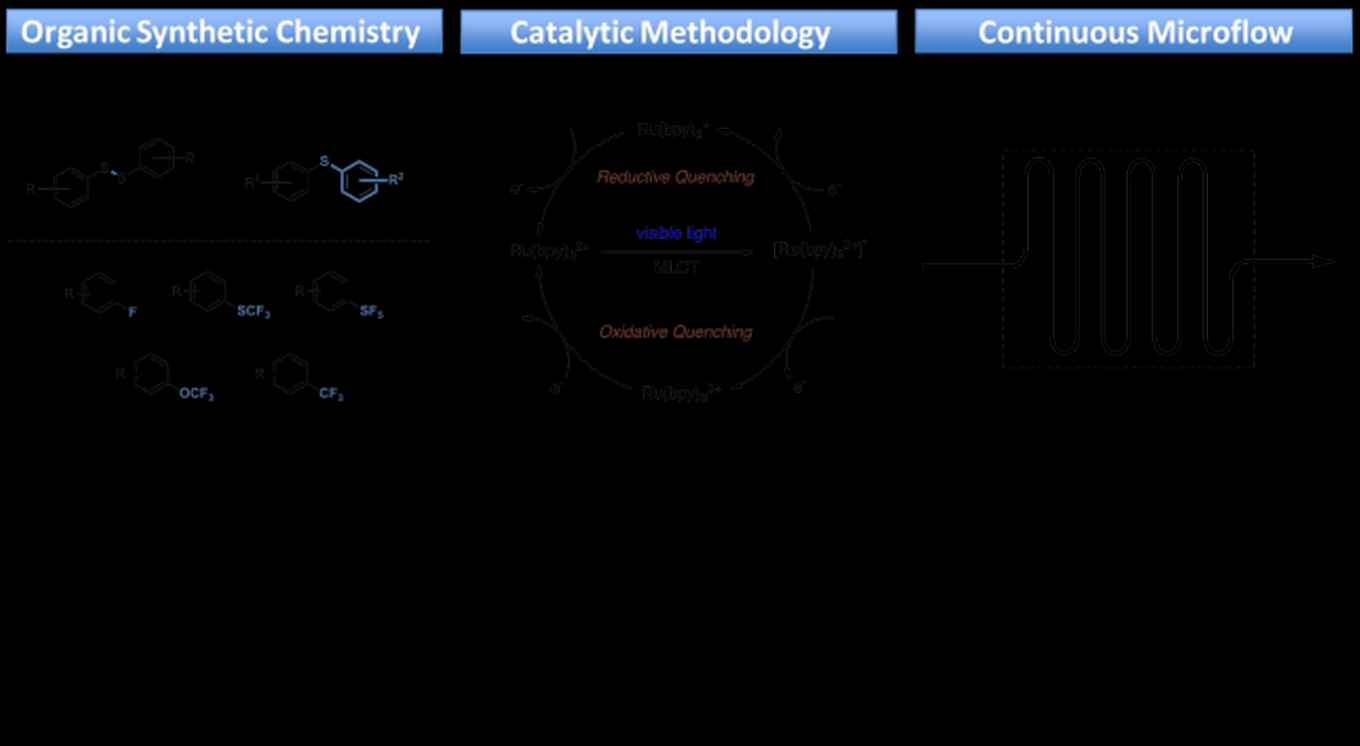Research
Flow Chemistry group
To see our latest work please visit the publications section of our external group website. Our main research themes are listed below.

Photoredox Catalysis
Visible light photoredox catalysis enables challenging organic transformations to be carried out under mild reaction conditions. However, the applicability of photoredox catalysis has been hampered due to the limited scalability. Our group has been engaged in developing novel photocatalytic methods to enable C–CF3, S–CF3, C–S and S–S bond-forming reactions. A substantial acceleration is observed when this chemistry is translated to continuous-flow: from hours/days in batch to seconds/minutes in flow. Read more.
Organic Electrochemistry
Since the 21st century, the electrochemical evolution has been gaining traction in the chemistry/chemical engineering field. For organic electrochemical synthesis, many important advantages have been demonstrated, including exquisite reaction control and avoidance of toxic oxidants and reductants. In accordance with the developing and reforming pathway in modern times, our group presents an independently researched and developed electrochemical reactor. The highly modular construction possesses technological advances which allows energizing the organic electrochemical field. Profiting from the modularized components, it provides an enhanced reproducibility and scalability. Currently, our group is applying this novel reactor design in a variety of newly developed electrochemical transformations. Read more.
C–H Activation Chemistry
The formation of carbon-carbon bonds is of great importance for the development of pharmaceuticals and other biologically active molecules, and functional materials. In contrast to traditional cross-coupling chemistry, C–H activation requires no prefunctionalization of the substrates. However, the applicability of C–H activation chemistry has been limited mainly by the inert nature of the carbon-hydrogen bond. Our group has developed continuous-flow strategies to boost the reactivity of C–H activation chemistry. Read more.
Flow Chemistry
Flow chemistry is typically used to enable challenging reactions which are difficult to carry out in conventional batch equipment. Our aim is to use flow chemistry (i) to improve the reaction efficiency, (ii) to enable gas-liquid reactions, (iii) to carry out hazardous chemistry (e.g. explosive regime) and (iv) to streamline multistep reaction sequences in an uninterrupted and automated fashion which requires no intermediate handling. Read more.
Chemical Engineering
It is the aim of the Noël group to understand the fundamental phenomena associated with flow chemistry. It is our firm belief that the engineering behind these phenomena can help to exploit the technology’s full potential. This includes e.g. a fundamental investigation towards the energy efficiency of photomicroreactors and an elucidation of reaction kinetics to study reaction mechanisms. Also, scaling effects are investigated which allow us to gradually scale the chemistry from a lab to a pilot scale. Read more.